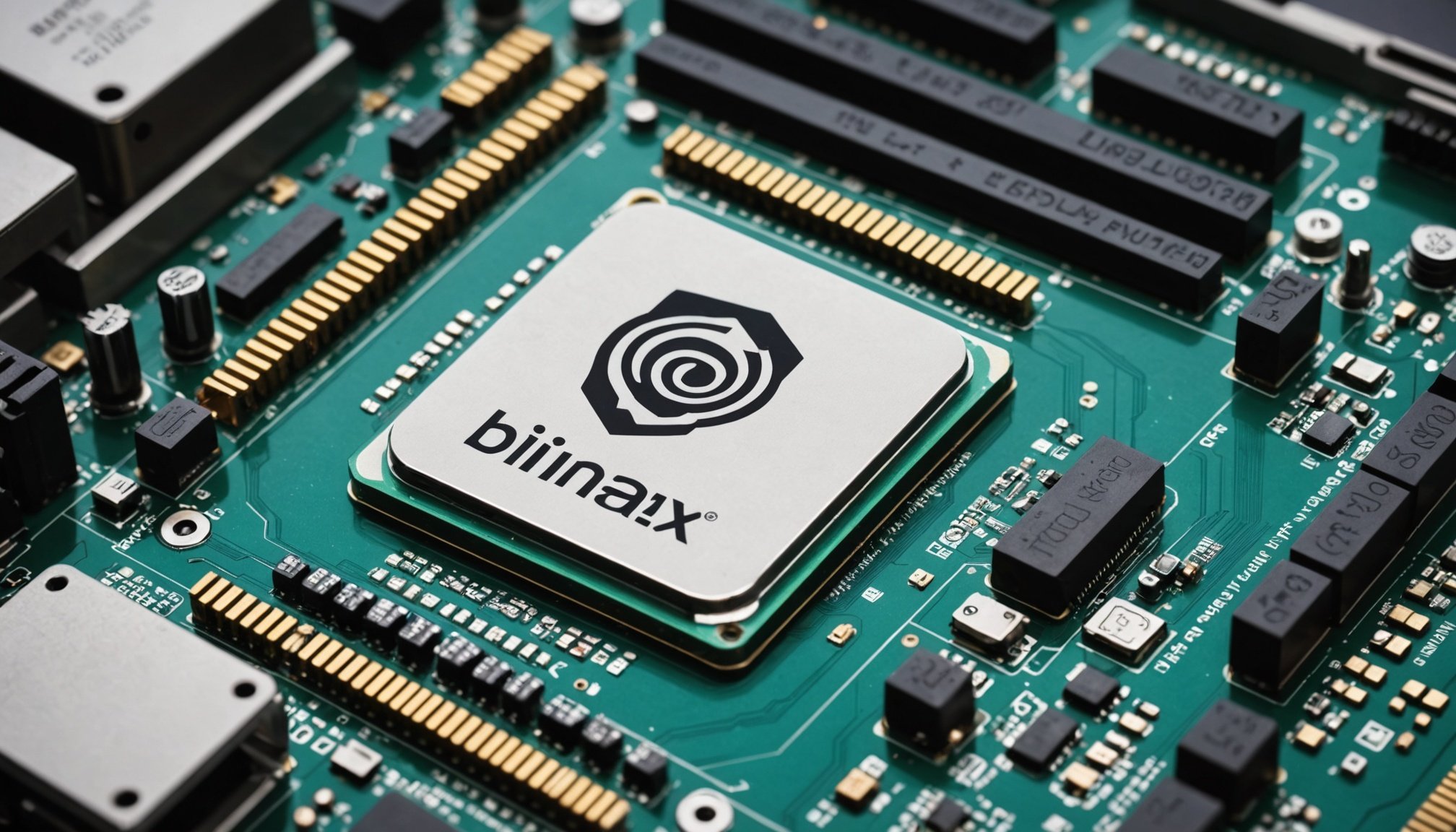How BIOS Updates Enhance Hardware Performance: Unlocking Their Critical Role
When it comes to optimizing the performance of your computer, one often overlooked but crucial aspect is the BIOS (Basic Input/Output System) or UEFI (Unified Extensible Firmware Interface) firmware. Updating your BIOS can significantly enhance your hardware’s performance, fix critical issues, and ensure your system remains secure and stable. Here’s a detailed look at why BIOS updates are essential and how they can transform your computing experience.
Why You Should Update Your BIOS
Updating your BIOS is no longer a task to be feared, as it once was due to the risk of bricking your device. With modern UEFI BIOS, the process is much safer and more streamlined. Here are some compelling reasons to keep your BIOS up to date:
New Features and Enhancements
BIOS updates often introduce new features that can significantly improve your system’s performance and functionality. For instance, features like Resizable BAR (Base Address Register) and Over 4G Decoding, which allow the CPU to access the entire GPU’s VRAM, were added via BIOS updates. This enhancement can boost GPU performance, especially in gaming and graphically intensive applications[1].
Improved Hardware Compatibility
Updating your BIOS ensures that your system can recognize and support the latest hardware components. This includes compatibility with new CPUs, GPUs, and memory modules. For example, if you upgrade your server with new processors, a BIOS update is necessary to add support for these new CPUs, preventing boot failures after installation[2].
Also to discover : Ultimate Liquid Cooling Setup: Your Go-To Guide for Installing Efficient Cooling in the Cooler Master MasterBox NR600 with Intel Core i9
Bug Fixes and Stability
BIOS updates fix bugs and instabilities that can cause system crashes, freezes, or unexpected reboots. Recent examples include issues with Intel’s 13th and 14th-gen CPUs, where faulty microcode algorithms caused instability. BIOS updates with fixed microcode can prevent such issues and protect your hardware from damage[1].
Security Patches
Security is a critical reason to update your BIOS. Firmware vulnerabilities like Meltdown and Spectre can be mitigated through BIOS updates. These updates patch security holes, protecting your system from potential cyberattacks and ensuring the integrity of your data[1][4].
The Process of Updating BIOS
Updating your BIOS might seem daunting, but it’s a relatively straightforward process once you understand the steps involved.
Preparing for the Update
Before you start, ensure you have the latest BIOS version from the manufacturer’s website. Here are the general steps:
- Download the BIOS Update File: Go to the manufacturer’s website and download the latest BIOS update file for your motherboard model.
- Prepare a USB Drive: Format a USB drive to a compatible file system (usually FAT32) and copy the BIOS update file to it[4].
Updating the BIOS
Here’s how you can update your BIOS:
- Enter BIOS Setup: Restart your computer and enter the BIOS setup by pressing the appropriate key (e.g., Delete, F2, or F12) during startup.
- Locate the BIOS Update Utility: Within the BIOS menu, look for an option like ‘EZ Flash,’ ‘Q-Flash,’ or a similar BIOS update tool.
- Select the Update File: Use the utility to navigate to the USB drive and select the BIOS update file.
- Initiate the Update Process: Follow the on-screen instructions to start the update. Ensure you do not interrupt the process until it is complete[4].
Benefits of BIOS Updates for Specific Hardware
BIOS updates can have a significant impact on various components of your system.
CPU Performance
For CPUs, especially new generations like Intel’s Arrow Lake or AMD’s Ryzen 9000 series, BIOS updates are crucial for optimal performance. These updates can fix microcode issues, improve stability, and ensure the CPU operates within safe voltage limits. For example, the Z890 motherboards for Intel’s Arrow Lake required a BIOS update to prevent system crashes during the Windows 11 24H2 update[1].
RAM and Memory Compatibility
BIOS updates can resolve memory incompatibilities and ensure that RAM modules run at their stated XMP or EXPO speeds. This is particularly important as motherboard and CPU manufacturers cannot test all memory modules before launch, and issues often arise post-launch[1].
GPU Performance
For GPUs, BIOS updates can enhance performance by enabling features like Resizable BAR and Over 4G Decoding. These updates can also allocate more VRAM to the GPU part of APUs in devices like the Lenovo Legion Go and Asus ROG Ally, significantly improving gaming performance[1].
Advanced BIOS Configurations for Optimal Performance
For users seeking fine-tuned performance, here are some advanced BIOS configurations to consider:
Overclocking
Overclocking involves adjusting CPU multipliers and voltage to achieve higher clock speeds. However, this must be done cautiously to prevent thermal throttling and ensure system stability. Monitoring temperatures and using cooling solutions are essential during this process[3].
Virtualization
Enabling Intel VT-x or AMD-V under the Advanced tab in the BIOS settings is crucial for running virtual machines. This feature is essential for users who need to run multiple operating systems simultaneously[3].
Troubleshooting BIOS Settings
If you encounter issues after updating your BIOS or configuring settings, here are some troubleshooting steps:
- Settings Not Saving: This could indicate a failing CMOS battery or misconfigured settings. Try resetting the BIOS to default and reapplying configurations[3].
- Compatibility Issues: If you experience compatibility issues with new hardware, ensure the BIOS update process is completed successfully. Sometimes, a BIOS flashback may be necessary to update the firmware without needing any components installed[1][3].
Best Practices for BIOS Updates
To ensure smooth and effective BIOS updates, follow these best practices:
Automate BIOS Updates
Use enterprise-grade tools to automate routine BIOS updates. This saves time, reduces potential errors, and ensures updates are consistently applied across all devices[2].
Check Performance After Updates
Use advanced monitoring tools to track system performance post-update. This helps identify and resolve any issues quickly, ensuring the system remains stable and secure[2].
Stay Informed
Integrate manufacturer announcements into your IT management workflow to stay updated on critical releases and new features. This keeps your team aware of important updates without extra research or manual checks[2].
Practical Insights and Actionable Advice
Here are some practical tips to keep in mind when dealing with BIOS updates:
- Regularly Check for Updates: Visit the manufacturer’s website periodically to check for new BIOS updates. This ensures you don’t miss out on critical fixes and new features[1][4].
- Backup Your Data: Before updating your BIOS, ensure you have backed up your important data. Although rare, there is a risk of data loss if the update process is interrupted[4].
- Follow Instructions Carefully: The update process must be followed meticulously to avoid any disruptions. Ensure the update is not interrupted by power outages or other system restarts[4].
Updating your BIOS is a critical maintenance task that can significantly enhance your hardware’s performance, stability, and security. By understanding the benefits and the process involved, you can ensure your system operates at its best. Here’s a summary of the key points:
Key Benefits of BIOS Updates
- New Features: Introduces new features like Resizable BAR and Over 4G Decoding.
- Hardware Compatibility: Ensures support for new CPUs, GPUs, and memory modules.
- Bug Fixes: Resolves bugs and instabilities causing system crashes.
- Security Patches: Protects against firmware vulnerabilities like Meltdown and Spectre.
Best Practices
- Automate Updates: Use tools to automate BIOS updates.
- Check Performance: Monitor system performance post-update.
- Stay Informed: Integrate manufacturer announcements into your workflow.
By keeping your BIOS up to date and following best practices, you can unlock the full potential of your hardware, ensuring peak performance, stability, and security.
Detailed List of Benefits
Here is a detailed list of the benefits of updating your BIOS:
-
New Features:
-
Enables features like Resizable BAR and Over 4G Decoding.
-
Allocates more VRAM to the GPU part of APUs.
-
Adds support for new hardware components like CPUs, GPUs, and memory modules.
-
Hardware Compatibility:
-
Ensures compatibility with new CPUs, preventing boot failures.
-
Resolves issues with PCIe devices like graphics cards and capture cards.
-
Fixes memory incompatibilities and ensures RAM modules run at their stated speeds.
-
Bug Fixes:
-
Resolves bugs causing system crashes, freezes, or unexpected reboots.
-
Fixes microcode issues affecting CPU performance and stability.
-
Corrects functionality issues with hardware components.
-
Security Patches:
-
Patches firmware vulnerabilities like Meltdown and Spectre.
-
Protects against potential cyberattacks and ensures data integrity.
-
Updates secure boot features in modern UEFI systems.
Table: Comparison of BIOS Update Benefits
| Benefit | Description | Impact |
|---|---|---|
| New Features | Introduces features like Resizable BAR and Over 4G Decoding. | Enhances GPU performance and overall system functionality. |
| Hardware Compatibility | Ensures support for new CPUs, GPUs, and memory modules. | Prevents boot failures and resolves compatibility issues. |
| Bug Fixes | Resolves bugs causing system crashes, freezes, or unexpected reboots. | Improves system stability and prevents hardware damage. |
| Security Patches | Patches firmware vulnerabilities like Meltdown and Spectre. | Protects against cyberattacks and ensures data integrity. |
| Performance Optimization | Optimizes CPU performance and ensures stable operation. | Enhances overall system performance and stability. |
| Advanced Configurations | Enables features like overclocking and virtualization. | Allows for fine-tuned performance and multi-operating system support. |
Quotes from Experts
- “Updating your BIOS equips it with the latest tools to diagnose hardware issues, improve performance, and strengthen system security. Just as a doctor adjusts treatments based on the newest research, a BIOS update fine-tunes your machine’s capabilities.”[2]
- “BIOS updates resolve compatibility issues, boost system stability, and patch security vulnerabilities, especially when you introduce new hardware or features.”[2]
- “Keeping your BIOS up to date benefits more than just PC motherboards. It also benefits devices like the Lenovo Legion Go and Asus ROG Ally by increasing the VRAM allocated to the GPU part of the AMD APU, which improves performance with graphically intensive games.”[1]
By understanding the critical role of BIOS updates, you can ensure your system operates at its peak, providing a smoother, more secure, and more efficient computing experience.





